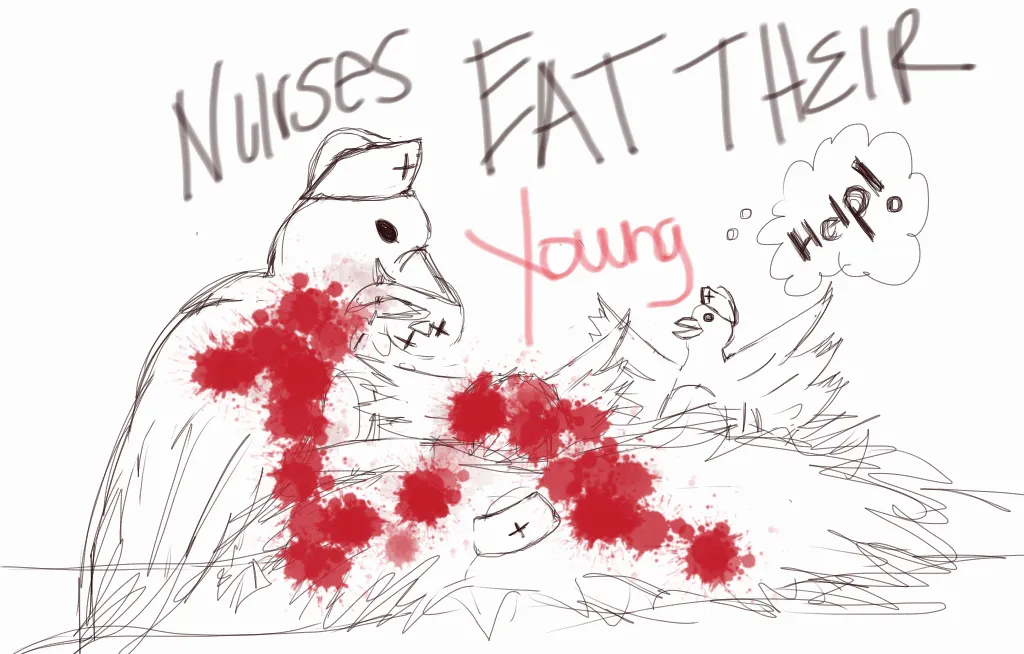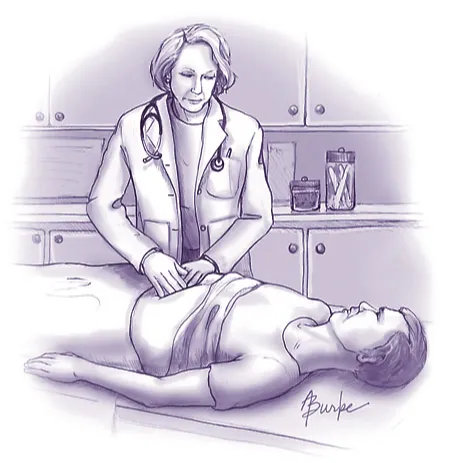Patient Care Journal of Nursing

The Power of Word Choice in Healthcare Settings: A Critical Examination
Tags: communication Empathy healthcare education patient care
Effective communication is vital for high-quality patient care in healthcare settings. Both verbal and non-verbal communication significantly impact patient outcomes and experiences, especially for cognitively impaired individuals. Miscommunication can lead to distress and misunderstandings. This article explores the nuances of verbal and non-verbal interactions, offering real-life examples of miscommunication and practical strategies for healthcare providers. By prioritizing clarity, empathy, and cultural sensitivity, healthcare providers can foster trust, reduce anxiety, and improve overall patient care.
Read More →
The Importance Of The Nurse Role In A Turner Syndrome Multidisciplinary Clinic
Tags: clinicals patient assessment patient care practic support
The Turner Syndrome Multi-Disciplinary Clinic (TSMDC) was established in 2015 to provide comprehensive, coordinated care for TS patients and their families. Initially led by a genetic counselor, the clinic evolved with a nurse coordinator taking over in 2018, streamlining patient triage and care coordination. The nurse coordinator ensures seamless communication between providers, organizes necessary tests, and helps maintain adherence to clinical guidelines. Over the years, the clinic expanded its team and services, leading to increased patient accessibility and improved outcomes. With a 90% adherence rate to clinical guidelines, TSMDC highlights the crucial role of nurse coordinators in enhancing efficiency, patient care, and long-term well-being.
Read More →
My Experience as a Stroke Nurse
Tags: neurologist nurse patient care stroke
As a stroke nurse, the role involves providing high-quality clinical care and offering emotional support to patients and families during challenging times. Stroke care requires medical expertise, empathy, and critical thinking. Nurses assess neurological function, administer medications, and work closely with a multidisciplinary team to ensure comprehensive recovery. The rehabilitation phase involves guiding patients through recovery while addressing their physical, emotional, and psychological needs. Nurses also educate patients and families on stroke prevention and lifestyle changes. The role is deeply rewarding as it allows nurses to help patients regain independence and improve their quality of life while continuously learning and advocating for stroke awareness and prevention.
Read More →
The little moments that help keep nurses going
Tags: night nurse night shift nursing students patient care
Recounting an incredible experience as a NICU nurse that helps keep me motivated to stay in the field.
Read More →
Exploring Diverse Career Paths in Pharmacy: Opportunities Await for Aspiring Pharmacists
Tags: pharmacists career medication patient care pharmaceutical pharmacy profession
Becoming a pharmacist means embarking on a rewarding journey in a field that offers a plethora of career opportunities. Pharmacy is far more than dispensing medications - it’s a dynamic and diverse profession with countless paths you can explore. Whether you’re drawn to patient care, research, or the corporate world, there’s a place for you. Let’s dive into the different career opportunities available to pharmacists and how you can find your niche.
Read More →
Advocacy in Nursing Practice: Let's Promote it More
Tags: healthcare leadership healthcare workers mental health Nurse and Burnout patient care
I decided to write an article around advocacy just to remind people how important it is.
Read More →
Let's Look Back, at TEAM Nursing!
Tags: nursing assistant patient care patient identification Team Nursing
Team nursing while working as a new nurse meant 3 sets of eyes on our patient load. The RN was required to start I.V.’s, take off doctors’ orders and administer I.V. push medication, but the RN was ENGAGED directly in patient care under this style of nursing! The nursing assistant and the RN worked side-by-side to provide outstanding care to the patient without the RN (myself, in this example), feeling chained to the medication cart and having the feeling that taking time out for patient care would make me late for a medication pass. Perhaps other nurses in my era didn’t appreciate this style of nursing care, but in more recent days, primary nursing is the paradigm.
Read More →
Applying Current Standards of Wound Care Practice: Improve Patient Outcomes and Save Precious Time
Tags: improvements patient care patient outcomes standard of care wound care
By applying the principles of Moist Wound Healing we can provide patients with excellent wound care while saving precious nursing time and resources.
Read More →
Nurses Eat Their Young; An Insight Into Systematic Hazing and its Implications on Patient Care
Tags: bullying hazing nursing nursing students patient care stress student nurse
I am a nursing student that worked as a CNA for six years. I was inspired to write this from my own experiences that I have encountered while working in the field of nursing.
Read More →
The Importance of Educating in Real-Time
Tags: acute care critical thinking educating nursing education patient care patient safety perioperative teaching
Working in the acute care hospital, provides many opportunities to learn. As healthcare workers, we must recognize and act quickly on any situation that puts a patient at risk. A recent situation occurred in the hospital that required both the need to act and to provide education in real-time.
Read More →
Increasing demands on nurses and the role of the nurse educator: Developing nursing competencies
Tags: Competency Nurse Education Nurse Educator patient care patient outcomes patient safety performance
Increasing demands of todays healthcare environment poses many challenges for nurses providing care at the bedside. Nurse educators are in a position to develop nursing competencies that support nurses and assist them in the provision of safe, quality patient care.
Read More →
Improving Patient Care While Decreasing Costs: The Benefits, Barriers, and Student Perspectives on Nurse Residency Programs
Tags: decreasing costs Floating graduates improving patient care new graduate nurses nursing nursing school nursing students patient care student perspectives violence
Many professions have long since realized that a vast divide exists between the classroom and real-world practice and, thus, have mandated transitional programs. Nursing lacks such an intermediate step as part of its professional training although new nurses are pressured to provide both safe and competent care to increasingly complex patients without any transitional support. To fill this gap many institutions have begun to implement their own nurse-residency programs [NRPs]. However, since not all institutions have introduced such transition-into-practice programs barriers must exist. Nationwide, NRPs are shrouded in confusion, false perceptions, and concerns that hinder their implementation. This manuscript was compiled to help shed light onto the reasons for the lack of implementation and provides evidence of the importance and overall benefits for such programs. Personal perspectives are also provided from the authors in order to gain a nursing-student perspective about these transitional programs.
Read More →
A Valuable Lesson on Loss
Tags: independence Lessons Learned loss Manuscript patient care patient experience reflection
I account a patient experience where I learned lessons on loss, independence, and not passing judgements.
Read More →
Sleep Deprivation of Nurses: Poor Health Care Practice
Tags: compassion patient care Sleep deprivation
Sleep deprivation of nurses and its impact on patient care
Read More →
Effect of Evidence-Based Method Clinical Education on Patients Care Quality and Their Satisfaction
Tags: chemotherapy clinical Clinical Education clinicals Evidence-based nursing patient care patient education patient satisfaction student nurse students
Nowadays, evidence-based education with a serious purpose, explicit and rational than the best current evidence to decision-making in nursing education has been addressed. This study aimed to assess the effect of clinical evidence based on the quality of patient care was performed Usual care based on traditional evidence-based care training has been under almost identical. Student feedback questionnaire data, patient satisfaction and quality of care were collected and then were analyzed with descriptive and inferential statistics. This study suggests that the use of evidence-based education in nursing care is not only effective as traditional education. But also knowledge and skills and promote high quality of care and the patient's hospital stay and costs were reduced.
Read More →
Distress and Depression Among Bone and Marrow Transplant Patients
Tags: BMT cancer patients chemotherapy depression distress patient care stress therapy treatment
Bone and Marrow Transplant (BMT) is a five step treatment process: screening, collecting, conditioning, infusion, and engraftment. Bone and marrow transplant treatment is very aggressive that creates significant physical, social, psychological, and emotional stress. During the treatment process, many BMT recipients experience and display a wide array of psychosocial disorders including distress, anxiety, and depression. The way an individual experiences and copes with the distress, anxiety, and depression contributes to the physiological, psychological, and psychosocial outcomes of BMT treatment.
Read More →Get Published for Free
Browse by Tag
advocate aging anesthesia behavior cardiac care Case Study child children clinical compassion COVID-19 critical care death diabetes disease education emergency department end of life ethical principles ethical values ethics future of nursing health health care ICU medication mental health nurse Nurse Education nursing nursing education nursing ethics nursing faculty nursing school nursing students PACU patient care patient outcomes patient safety pediatric poem profession risk factors stress student nurse students teaching therapy treatment
Most Popular Last Month
More from RN Journal
Managing behavior in children with ASD
Risperdal and Autism
The Algorithm of Rapid Response (RRT Nursing)
A Retrospective on Nursing During the 2014 - 2016 Ebola Outbreak
The role of Sunlight, Vitamin D and nature in aiding cognition in mental health
Let's Look Back, at TEAM Nursing!
Missionary to Haiti
A Study To Exploring Nursing Students' Lived Experiences In Pediatric Clinical Practice In A Selected College, Chennai
Distress and Depression Among Bone and Marrow Transplant Patients









